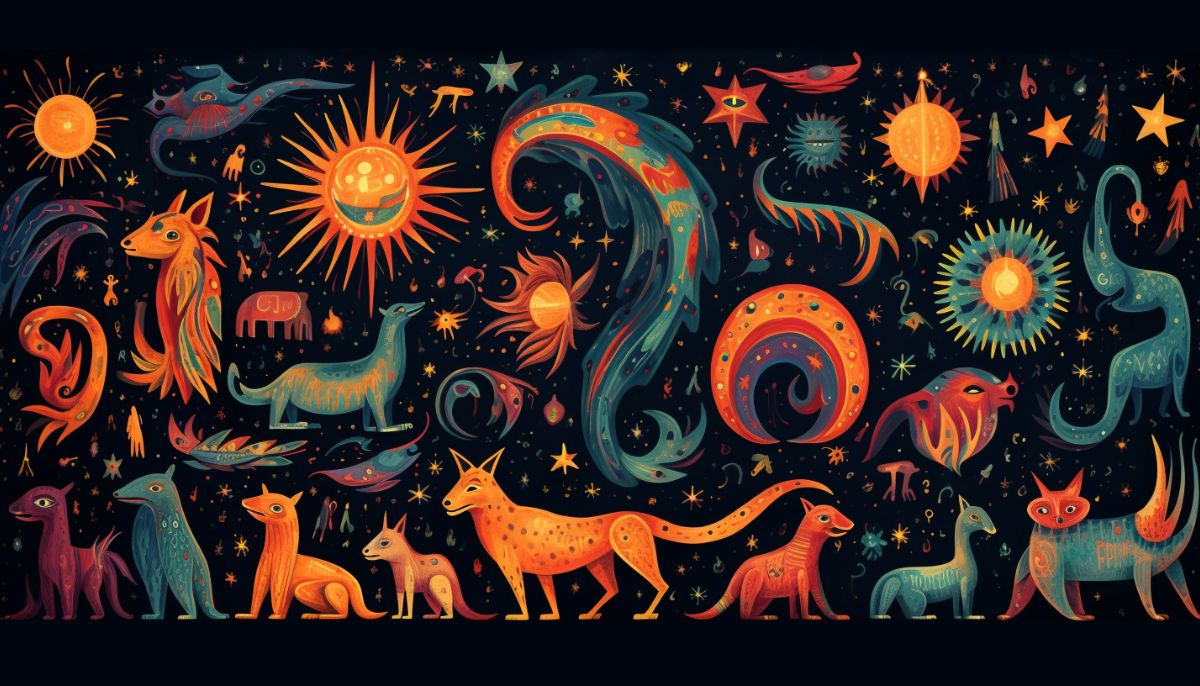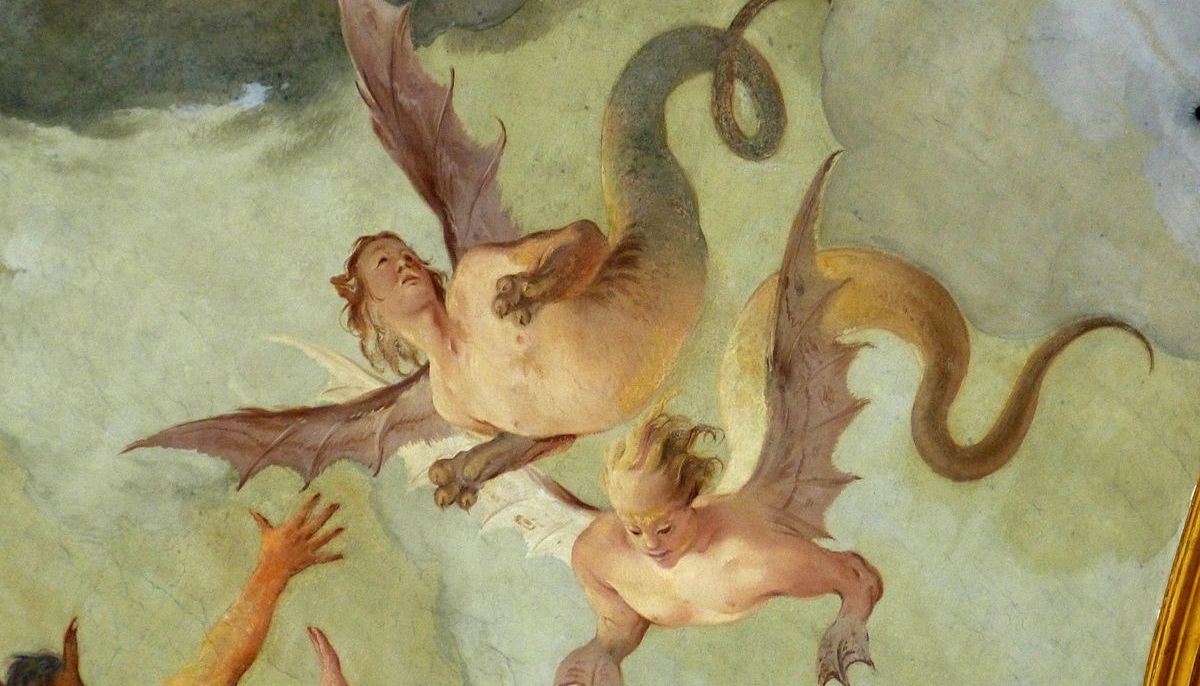In the realm of Greek mythology, the harpies emerge as enigmatic and intriguing figures. These bird-like creatures embody beauty and terror. They play crucial roles in various ancient tales.
The harpies leave an indelible mark on the world of gods and mortals, from their notorious encounters with King Phineus to their association with swift winds.
Join us as we delve into the captivating mythology of the harpies, exploring their appearances, powers, and notable stories.
What do harpies look like?
In Greek and Roman mythology, harpies are fantastical beings embodying the tempestuous forces of storm winds. Described as a hybrid of humans and birds, their appearance varied slightly according to different accounts.
Harpies were often imagined as bird-like beings with the faces of young women, their expressions reflecting a constant hunger. They possessed long, sharp claws on their hands.
Some depictions in pottery art portrayed them as winged women of great beauty. Ovid vividly characterized them as human vultures, emphasizing their striking blend of avian and human traits.
Hesiod’s Harpies
The ancient poet Hesiod imagined harpies as fair-locked maidens with wings, capable of soaring with the swiftness of the wind. According to his account, Okypete and Aello, the harpies of lovely hair, were known to match the velocity of the blowing winds and birds in flight with their own remarkable speed.
Aeschylus’s Harpies
Aeschylus, an early playwright, introduced a contrasting view, portraying harpies as grotesque beings with wings. Over time, the depiction of harpies became increasingly monstrous, reaching an extreme in descriptions that likened them to repugnant creatures, distinct from the traditional portrayal of Gorgons.
Their features included wingless, dark forms, characterized by repulsive snores and hateful eye secretions. Their appearance was deemed unsuitable for divine sanctuaries or human abodes.
Virgil’s Harpies
Virgil, the Roman poet, continued this portrayal, emphasizing their bird-like bodies coupled with girl-like faces, and highlighting the abhorrent nature of their droppings.
According to Hyginus, harpies were envisioned with feathered bodies, rooster-like heads, wings, and human arms, each adorned with formidable talons.
Their anatomy included human breasts, bellies, and female reproductive parts, further contributing to these mythological creatures’ complex and enigmatic nature.
Are harpies good or evil?
In Greek mythology, Harpies were known as the spirits of sudden, fierce gusts of wind. Often referred to as the “hounds of Zeus,” the god dispatched these creatures to seize people and objects from the earth, leading to mysterious disappearances attributed to them.
The harpies were considered agents of punishment, abducting individuals and subjecting them to torment en route to Tartarus. They were widely viewed as vicious, cruel, and violent beings.
The Powers of Harpies in Greek Mythology
Harpies’ powers lay in their ability to manipulate wind, specifically in sudden gusts. Their name, “snatchers” or “swift robbers,” reflected their knack for stealing food from individuals as they ate.
They were also associated with carrying evildoers, particularly those who committed acts such as familial homicide, to the Erinyes (Furies). In cases where individuals mysteriously vanished, it was believed they had been taken by the harpies.
These creatures were considered servants of the god Zeus and listed among the underworld guardians and other monstrous entities. Depending on the account, their residence was described as the Strofades islands, an entrance to Orcus, or a cave in Crete.
- Learn about the Chimera
Famous Harpies in Greek Mythology
The harpies, infamous Greek mythology creatures, have left an indelible mark on ancient tales of gods and mortals. Several harpies gained notoriety for their distinctive characteristics and involvement in pivotal stories.
Celaeno, the Dark Harpy
Celaeno, counted among the notorious harpies, was renowned for her malevolent disposition. She personified the cruel and violent nature attributed to these creatures with a visage marked by hunger and long, menacing claws.
Podarge, Mother of Steeds
Homer identified Podarge as the mother of the two horses, Balius and Xanthus, sired by the West Wind Zephyrus. According to Nonnus, she also gave birth to Xanthus and Podarkes, the swift horses of Athenian king Erechtheus, from her union with the North Wind Boreas.
Aello and Ocypete, Storm Swift Sisters
Known as the swift and stormy harpies, Aello and Ocypete were feared for their ability to match the speed of the wind itself.
Zeus often dispatched these winged sisters to snatch people and objects from the earth, leaving behind a trail of sudden and mysterious disappearances.
The Boreades’ Confrontation
One of the most celebrated tales involving the harpies revolves around King Phineus of Thrace, who, gifted with the power of prophecy by Zeus, meted out the god’s secret plans. As punishment, Phineus was blinded and marooned on an island with food perpetually eluding his grasp due to the relentless harpies.
This torment continued until the arrival of Jason and the Argonauts. The Boreades, sons of the North Wind Boreas, took it upon themselves to free Phineus from the harpies’ tyranny.
The Intervention of the Gods
As the Boreades pursued the harpies, an intervention by either Iris or Hermes prevented their impending demise. Phineus was assured respite from the harpies’ harassment, and the winged creatures returned to their abode in Crete.
Harpies stand out as one of the many fascinating beings of Greek mythology. However, they are not the only hybrid beings in Greek myths. Similar creatures, like the sirens, also feature prominently in these ancient stories. Are sirens and harpies the same?
Greek mythology, with its myriad of creatures like sirens and harpies, invites us to explore a world where the boundaries between the natural and the supernatural blur, offering endless possibilities for storytelling and interpretation.
Want to know more about the creatures and monsters of Greek Mythology?

Explore more articles like this in our broader series on Greek monsters. To delve even deeper into the world of mythical creatures, be sure to check out our comprehensive hub article on the monsters of Greek mythology.






